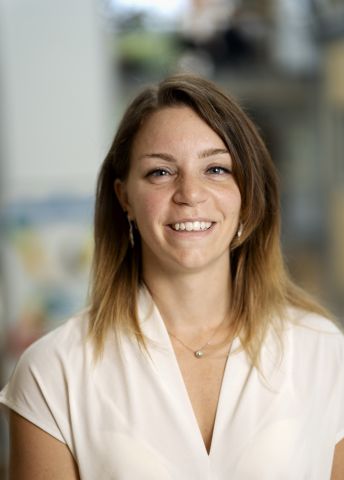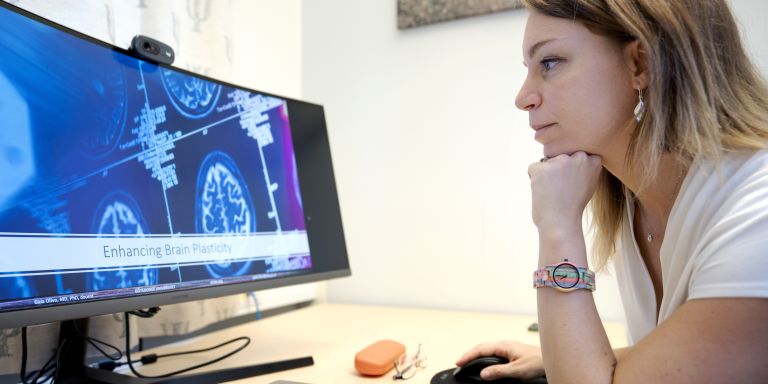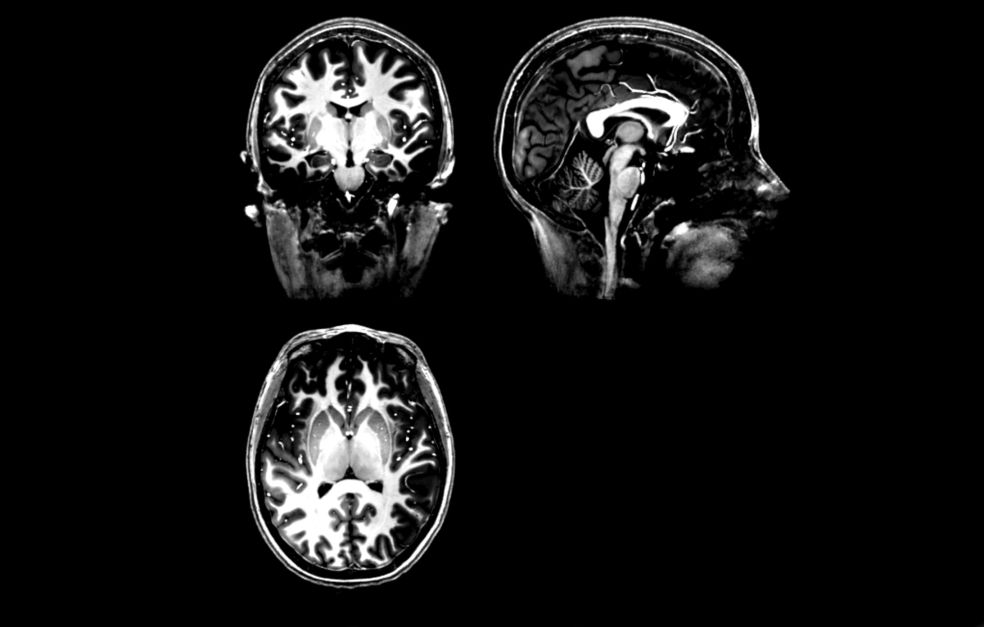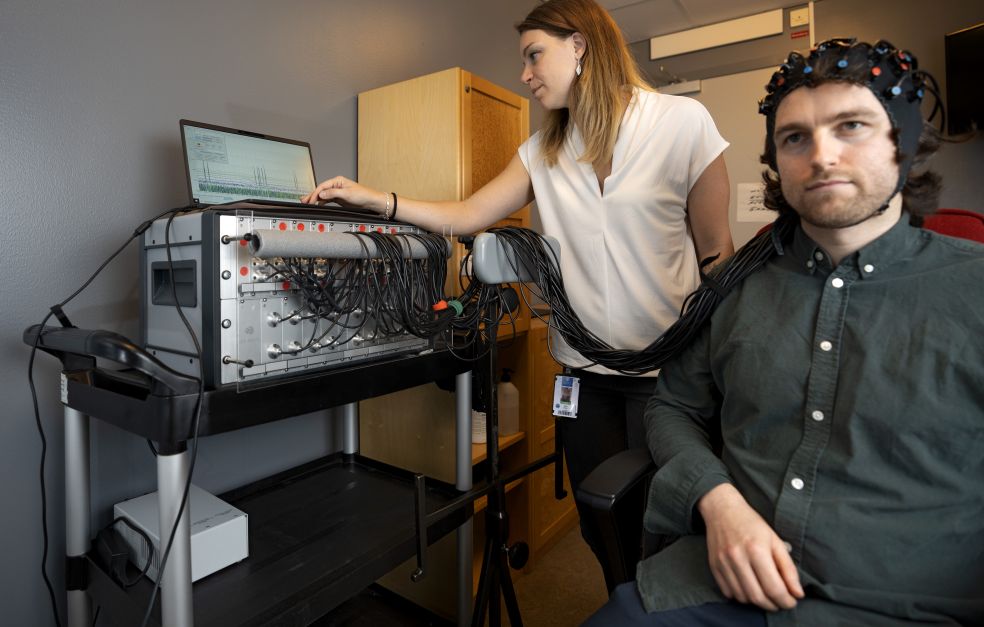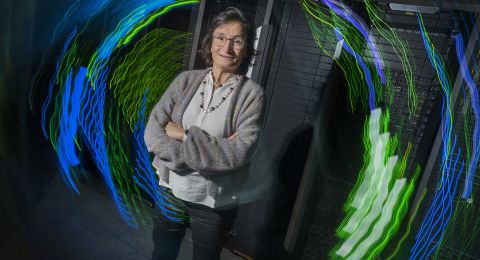The brain is never finished: throughout our lives it has a fantastic capacity to change and restructure. Wallenberg Academy Fellow Gaia Olivo is using groundbreaking new technology to make a detailed study of the brain’s enormous capacity for change. This knowledge may pave the way for better support for people facing physical or mental challenges.
Gaia Olivo
Associate Professor of Neuropsychology and Cognitive Neuroscience
Wallenberg Academy Fellow 2023
Institution:
University of Gothenburg
Research field:
Neuropsychology and cognitive neuroscience
Based at the University of Gothenburg, Olivo wants to take vital steps toward a better understanding of the human brain. She is especially interested in the brain’s plasticity, i.e. its ability to constantly change and create new connections between its various parts.
“The brain can change both structure and function – an essential ability. During our lives we can experience many things that impact us. But thanks to the plasticity of our brain, we can learn new things, regain abilities lost through injury, or change the brain’s reaction to situations and events. This is why it’s essential to learn more about the brain’s plasticity so we can help people facing various situations and challenges, mentally as well as physically,” she says.
Researchers long believed that the brain of an adult could not change much – the brain only continued to develop during childhood. This is one of several myths that new research has exploded.
“The brain can change throughout our lives, and there is much we ourselves can do to change and adapt it. We also know now that changes in the brain need not be a long-drawn-out process; they can happen very quickly. For instance, it only takes a few minutes before the volume of the brain’s gray matter increases when we learn something new,” Olivo explains.
New neural connections as we learn
It is precisely these rapid changes that Olivo will be concentrating on over the next few years. Her research team will be using the latest brain imaging technology to conduct a detailed study of the cerebral processes taking place when we learn new motor skills.
The study involves scanning people’s brains when they are instructed to use their fingers to depress different piano keys in a given order. Volume changes in different parts of the brain will be measured to give the researchers an idea of its plasticity during learning.
“Learning new things creates numerous new synaptic connections in the brain, and its volume increases. Some of the new connections work well, others don’t. After a while the brain’s volume decreases again. We believe this is because the number of connections falls when the brain learns which work and which don’t. We’re going to examine this more closely,” Olivo says.
One key question is whether the brain’s volume is mainly due to increased blood flow during learning, or occurs because the brain forms new synaptic connections, and is actually being modified. To answer this question, the researchers are conducting comparative MRI studies on mice that are trained to learn new motor skills. First, their brains are scanned during the learning phase. The researchers then examine tissue samples from their brains under a microscope. This enables them to see, at cellular level, where and how new synaptic connections have been created.
“We’re comparing brain changes occurring in mice and humans, enabling us to gain a detailed picture of what happens in mouse cells when brain volume increases. This in turn enables us to draw numerous conclusions about the mechanisms behind the brain’s rapid elasticity,” Olivo explains.
Groundbreaking techn0logy reveals unique details
The researchers are also ascertaining how long changes in the brain last after learning, and whether it is possible to predict individual differences in brain plasticity, e.g. due to lifestyle, physical activity, education or social habits.
The project is unique in a number of ways, not least the groundbreaking brain imaging technology. The efficient MRI camera, which to date has been used only by a few research teams in Europe, has a resolution more than twice as high as the cameras that Olivo’s team has previously used: 7 Tesla instead of 3.
“Earlier technology gave us an overall picture of what happens in the brain. Now we can examine much smaller parts of the brain and obtain extremely detailed information. Few studies have been made using this type of combined testing on mice and humans,” she says.
We hope the project will yield more knowledge about what happens when the brain changes, and whether we ourselves can do anything to increase its plasticity.
Much still not understood
The human brain has fascinated Olivo ever since she was a child. In her youth she considered a future in criminology or psychiatry before her medical studies gave her an insight into the potential offered by brain imaging technology.
“I found it absolutely captivating. It’s so cool to be able quite literally to see what’s happening in the brain – how it’s activated and changes when we think. I’m amazed by all the wondrous things our brains can do, what perfect machines they are. And yet there’s still so much we don’t know about the brain,” Olivo says.
In ten years’ time Olivo believes we will know far more about the brain than we do at present.
“In many areas we’ve only just begun to realize how our brains work. I think we need to understand more about their individual differences. We’re all individuals with different experiences, lives and goals, and all this impacts our brains. The more we learn about this, the greater our chances of making the best of our brains.”
Text Ulrika Ernström
Translation Maxwell Arding
Photo Johan Wingborg
